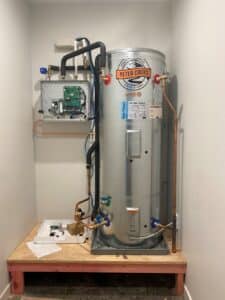Protecting your inventions and innovations is crucial in today’s competitive landscape. Patents play a vital role in ensuring that your unique ideas remain yours, allowing you to benefit from your hard work and creativity. But have you ever wondered how the patent application process works in New Zealand?
This resource aims to guide you through the steps involved in obtaining a patent, making the process clearer and more manageable. Understanding how to navigate this journey can empower you to take control of your intellectual property and maximise its potential.
Securing a patent not only offers legal protection but also opens doors to commercial opportunities. With a patent, you can prevent others from using your invention without permission, giving you a competitive edge in the market.
Understanding Patents
Definition of a Patent
A patent is a legal right granted to an inventor that gives them exclusive control over their invention for a specific period. This means that others cannot make, use, or sell the invention without the inventor’s permission. The primary purpose of a patent is to encourage innovation by providing inventors with the incentive to develop and share their ideas.
Types of Patents
In New Zealand, there are two main types of patents:
- Standard Patents: These are granted for new inventions that meet specific criteria of novelty, inventiveness, and utility. A standard patent typically provides protection for up to 20 years from the filing date.
- Innovation Patents: While New Zealand does not have a separate innovation patent system, some inventors may explore alternatives like utility models in other jurisdictions. In Australia, for example, innovation patents offer a shorter term of protection (up to eight years) and require a lower threshold of inventiveness.
Eligibility Criteria
To be eligible for a patent, an invention must be new, meaning it hasn’t been publicly disclosed before the filing date. It should also involve an inventive step, which means it must not be obvious to someone with knowledge of the subject. Additionally, the invention must be useful and capable of being applied in some way. Common patentable subjects include new products, processes, and improvements to existing technologies.
Initial Considerations Before Applying
Conducting a Patent Search
Before applying for a patent, researching existing patents is vital. This step ensures your invention is unique and can save time and resources. Use tools like the Intellectual Property Office of New Zealand (IPONZ) database and other online platforms to conduct your search.
Assessing Patentability
To determine if your invention is patentable, consider these three criteria:
- Novelty: Your invention must be new and not previously disclosed or patented.
- Inventiveness: It should involve an inventive step, meaning it should not be obvious to someone skilled in the field.
- Utility: The invention must have a practical purpose and be applicable in some way. Meeting these criteria is crucial for a successful patent application.
The Patent Application Process
Prepare Your Application
- Description of the Invention: Clearly outline and detail your invention, providing enough information for others to understand its purpose and functionality.
- Claims: Define what aspects of the invention are being protected, specifying the scope of the patent.
- Drawings: Include visual aids to enhance the understanding of your invention; they are essential for illustrating complex ideas.
File the Application
- Filing Options: You can choose between a provisional application, which provides a temporary safeguard for 12 months, or a complete application, which requires full details and is examined.
- Where to File: Applications are submitted to the Intellectual Property Office of New Zealand.
Examination Process
- Request for Examination: After filing, you must request an examination within 5 years. This step is crucial for determining the patentability of your invention.
- Examination Outcome: The examiner will assess your application, resulting in either acceptance or objections that need to be addressed.
Responding to Objections
If objections arise, you must respond within the given timeframe, typically 3 months. Address any requests for amendments clearly to satisfy the examiner’s concerns and advance your application.
Post-Application Steps
Grant of Patent
Once your patent is granted, you will receive a formal certificate, providing exclusive rights to your invention. In New Zealand, standard patents offer protection for up to 20 years from the filing date, while renewal fees are required annually to maintain the patent’s validity.
Enforcing Patent Rights
Enforcing patent rights involves monitoring the market for potential infringements. If someone uses your patented invention without permission, you can take legal action against them. This may include sending cease-and-desist letters or pursuing court action. It’s crucial to keep thorough records of your patent rights and any unauthorized use to support your case.
Costs Involved
Application Fees
Filing a patent application incurs various fees. In New Zealand, the initial application fee typically ranges from $150 to $1,500, depending on the complexity of the application and the number of claims made.
Additional Costs
In addition to application fees, there are professional fees for services such as patent attorney assistance, which can vary widely based on the attorney’s experience and the complexity of your case. Maintenance fees are also required annually to keep your patent active, which can range from $200 to $500 per year. Budgeting for these costs is key to ensuring ongoing protection of your intellectual property.
Common Challenges in the Process
Frequent Errors
During the patent application process, avoid pitfalls such as insufficiently describing your invention, failing to conduct a thorough patent search, and not clearly defining your claims. These mistakes can lead to application rejections or delays in granting your patent.
Delays in Processing
Delays can occur due to incomplete applications, the need for additional information from the applicant, or backlogs at the IPONZ. To mitigate these delays, ensure that your application is comprehensive and well-prepared, and respond promptly to any requests for information from IPONZ. Regularly checking the status of your application can also help identify potential issues early.
Take the Next Step
If you’re ready to protect your invention, don’t hesitate to contact a registered, reputable patent attorney for a consultation. Navigating the patent application process can be complex, but an experienced attorney can guide you every step of the way. Look for professionals known for their technical knowledge and legal expertise to ensure your application is prepared thoroughly and effectively.
Closing Statement
The patent application process involves several key steps: preparing your application with a detailed description, filing it with the Intellectual Property Office of New Zealand, undergoing an examination, and addressing any objections. Successfully navigating this process is crucial for securing your intellectual property.
For the best chance of success, consider seeking professional advice from a patent attorney. Their expertise can help you avoid common pitfalls and ensure your application is robust, giving you confidence as you protect your innovative ideas.











